Led Light Tape With a High Continuous Maximum
LED STRIP LIGHTS
EVERYTHING YOU NEED TO KNOW BEFORE YOU BUY
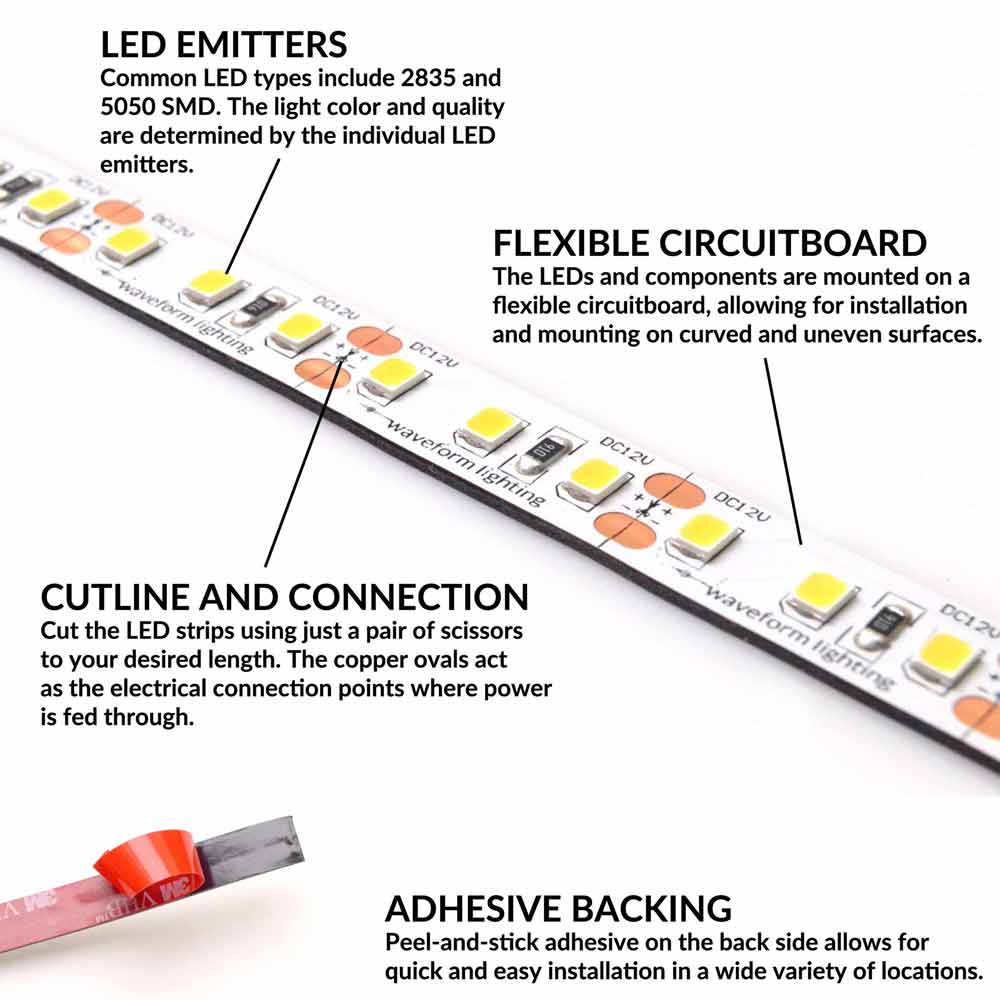
Anatomy of an LED strip
An LED strip light is typically half an inch (10-12 mm) in width, and up to 16 feet (5 meters) or more in length. They can be cut to specific lengths using just a pair of scissors along the cutlines, located every 1-2 inches.
Individual LEDs are mounted along the strip, typically at densities of 18-36 LEDs per foot (60-120 per meter). The light color and quality of the individual LEDs determine the overall light color and quality of the LED strip.
The backside of the LED strip includes pre-applied double-sided adhesive. Simply peel off the liner, and mount the LED strip to virtually any surface. Because the circuitboard is designed to be flexible, LED strips can be mounted on curved and uneven surfaces.
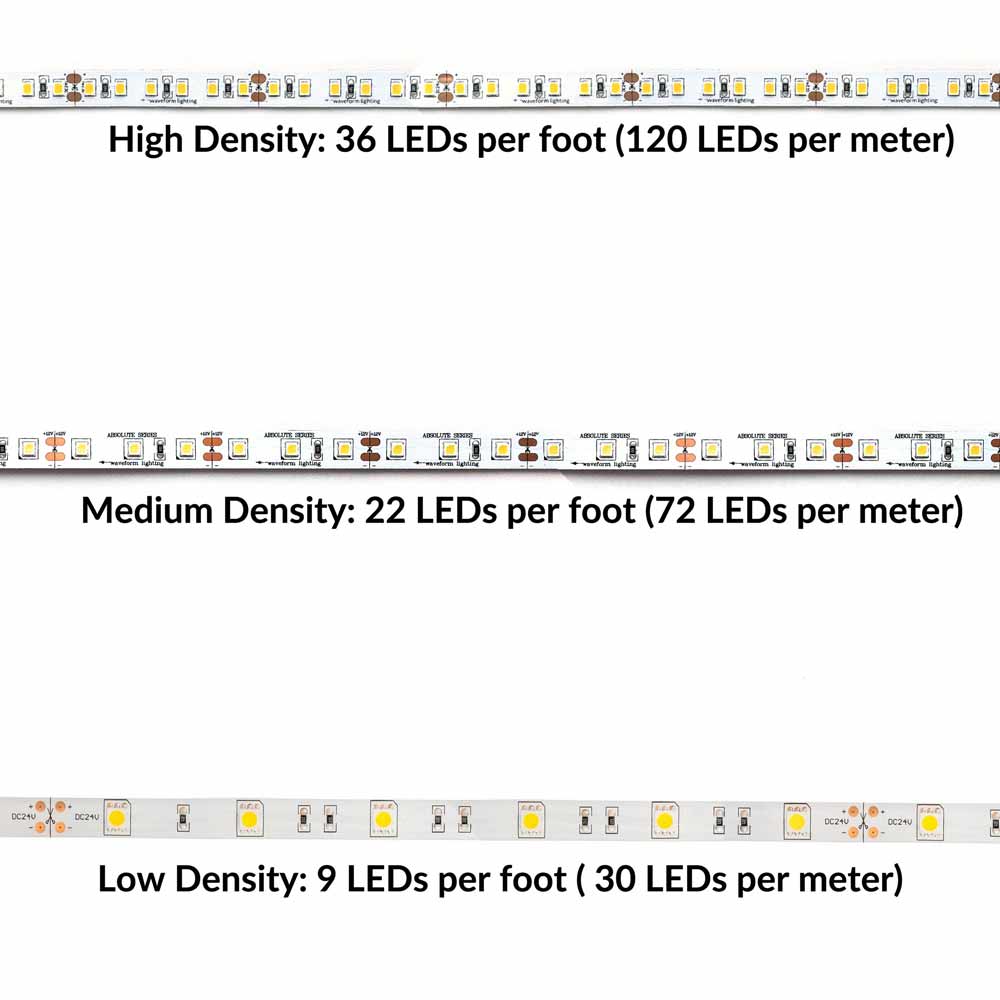
LED Density & Power Draw
You may come across various LED emitter names such as 2835, 3528, 5050 or 5730. Do not worry too much about this, as what is most important in an LED strip is the number of LEDs per foot, and the power draw per foot.
LED density is important in determining the distance between LEDs (pitch) and whether or not there will be visible hotspots and dark spots between the LED emitters. A higher density of 36 LEDs per foot (120 LEDs per meter) will typically provide the best, most evenly distributed lighting effect. LED emitters are the most expensive component of LED strip manufacturing, so be sure to account for LED density differences when comparing LED strip prices.
Next, consider an LED strip light's power draw per foot. The power draw tells us the amount of power the system will consume, so this is important to determine your electricity costs and power supply requirements (see below). A good quality LED strip should be capable of providing 4 watts per foot or more (15 W/meter).
Finally, do a quick check to determine if the individual LEDs are being overdriven by dividing the wattage per foot by the LED density per foot. For an LED strip product, it is usually a good sign if the LEDs are not driven at more than 0.2 watts each.
Learn more about the factors that affect LED strip light longevity.
LED Strip Color Options: White
LED strip lights are available in various shades of whites or colors. Generally, white light is the most useful and popular option for indoor lighting applications.
In describing the different shades and qualities of white, color temperature (CCT) and color rendering index (CRI) are two metrics that are important to keep in mind.
Color temperature is a measure of how "warm" or "cool" the light's color appears. The soft glow of a traditional incandescent bulb has a low color temperature (2700K), while the crisp, bright white of natural daylight has a high color temperature (6500K).
Color rendering is a measure of how accurate colors appear under the light source. Under a low CRI LED strip, colors might appear distorted, washed out, or indistinguishable. High CRI LED products offer light that allows objects to appear the way they would under an ideal light source such as a halogen lamp, or natural daylight. Also look for a light source's R9 value, which provides further information about how red colors are rendered.
Need help deciding which color temperature to choose? See our tutorial here.
Adjust the sliders below for a visual demonstration of CRI vs CCT in action.
Warmer ← CCT → Cooler
Lower ← CRI → Higher

LED Strip Color Options: Fixed and Variable Color
Sometimes, you might need a punchy, saturated color effect. For these situations, colored LED strips can offer great accent and theatrical lighting effects. Colors across the entire visible spectrum are available - violet, blue, green, amber, red - and even ultraviolet or infrared.
There are two primary types of colored LED strip: fixed single color, and color changing. A fixed color LED strip emits just one color, and the operating principle is just like the white LED strips we discussed above. A color-changing LED strip consists of multiple color channels on a single LED strip. The most basic type will include red, green and blue channels (RGB), allowing you to dynamically mix the various color components on the fly to achieve virtually any color.
Some will allow for dynamic control of white color temperature tuning or even both color temperature and RGB hues.
Pictured here is our SimpleColor™ Violet LED strip light inside of our aluminum channel.
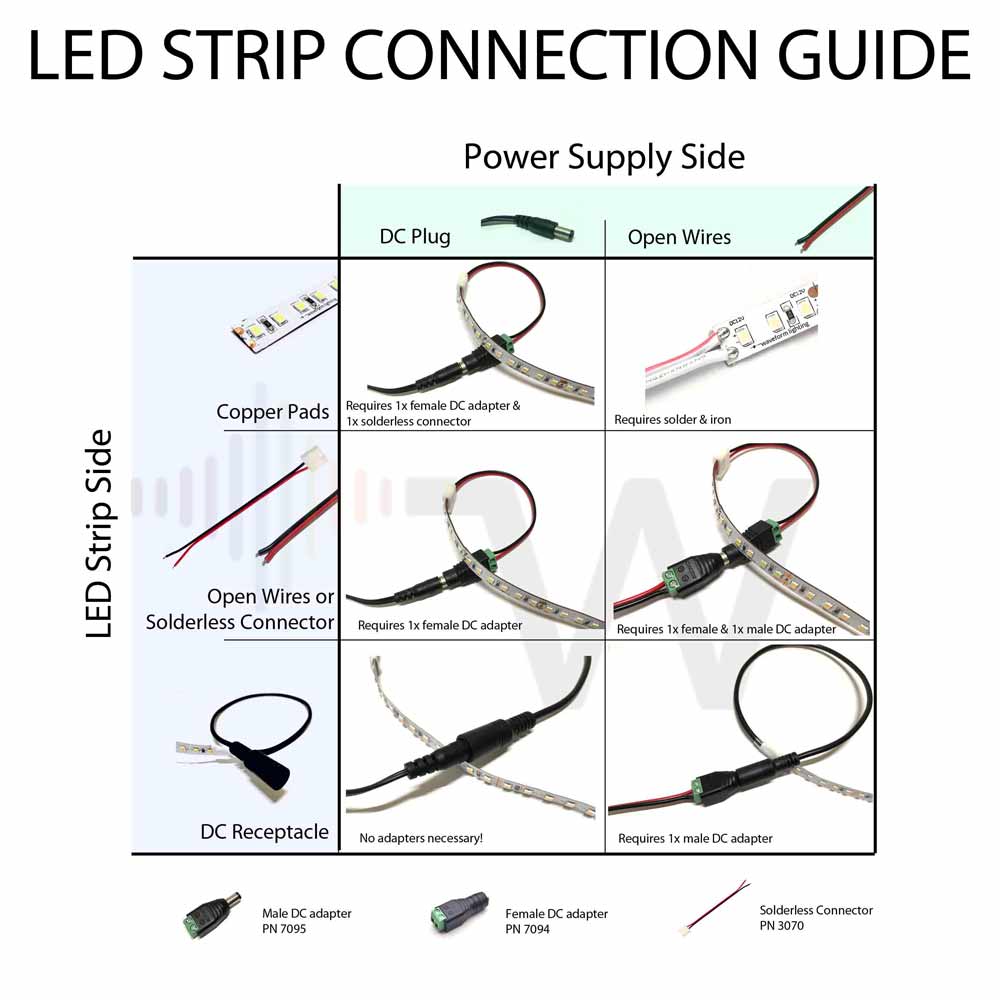
How to Connect LED Strips
Each LED strip segment must be connected to a DC power supply, or another LED strip segment that is connected to a DC power supply (daisy chain). The connection method will depend on the type of wires or plugs provided with the LED strip, as well as whether or not the DC power supply includes a plug. If you are familiar and comfortable with soldering, oftentimes this can provide the most cost effective and flexible solution.
Not sure how or don't want to deal with solder? You can also use solderless connector accessories to connect LED strip segments to power supplies and other LED strip segments.
More Info →
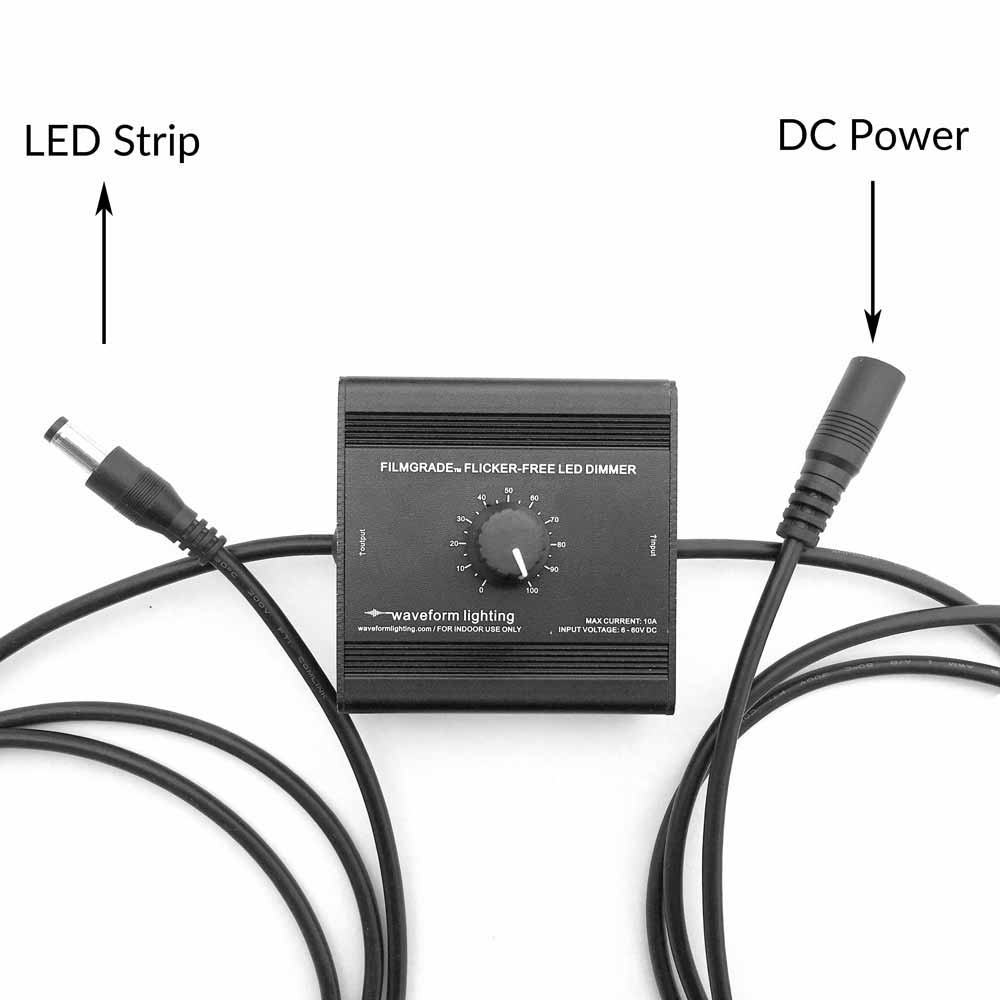
Dimming and Color Control
Unlike LED bulbs, all LED strips are dimmable when paired with the correct equipment. There are two methods of dimming LED strips: a traditional phase-cut wall-dimmer, or a DC low-voltage dimmer. The AC phase-cut dimmer approach is typically most ideal for residential and commercial lighting applications where the dimming input signal comes from a traditional wall-switch dimmer. This setup requires a TRIAC dimmable power supply.
A DC low-voltage dimmer or (RGB) controller is typically in the form of a manual or digital dimmer module that is placed between the DC power supply and the LED strip. This approach is best suited for color changing applications or less permanent lighting installations.
Learn More →
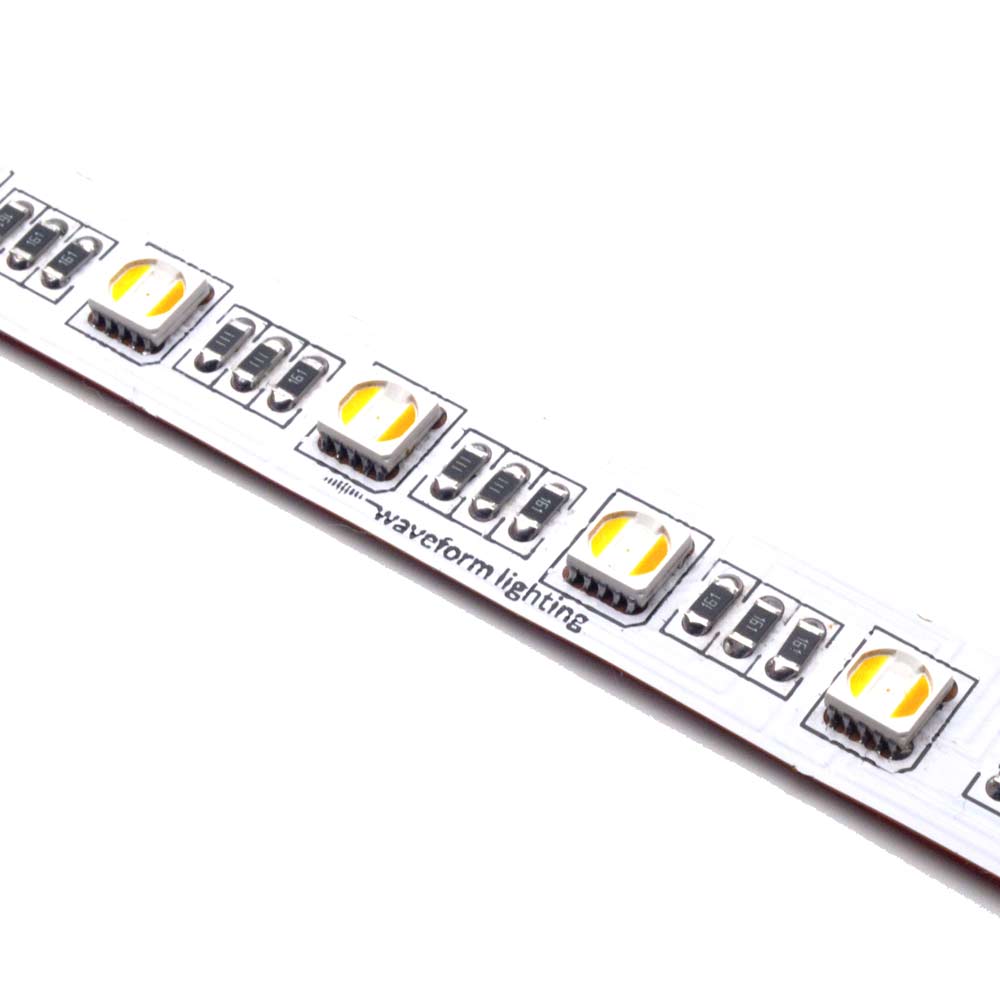
Want to learn more?
Visit our product support center to learn more about our products. Download spec sheets, test reports and reach out to us with any questions.
littletonwheme1992.blogspot.com
Source: https://www.waveformlighting.com/led-strip-lights#:~:text=An%20LED%20strip%20light%20is,located%20every%201%2D2%20inches.
0 Response to "Led Light Tape With a High Continuous Maximum"
Post a Comment